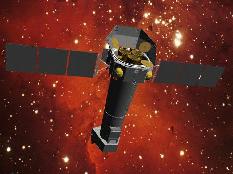Related sites
Optical resources
Internal material
 |
XMM Survey Science Centre |
[ New Cambridge XMMSSC PloneZone]
The XMM Survey Science Centre is an international collaboration involving a consortium of 8 institutions in the UK, France and Germany. ESA formally selected this consortium to provide the SSC in February 1996. PPARC funding of the UK element of the SSC is currently approved for a 7-year period which commenced in April 1996. XMM was succesfully launched in Dec 1999 and may have a lifetime of upto 10 years.
SSC responsibilities
The Cambridge
SSC co-investigators; Richard McMahon, Andy Fabian and Richard Ellis(now
at Cal Tech).
Cambridge activities
Prior to launch the main role of the IOA team is to provide multi-colour
optical catalogues from the APM in a useful form for the
identification program and
to work on the development of the optimum strategy for the identification
program.
The main scientific interests of the Cambridge team in the context of
the SSC program are:
Post launch the IOA SSC work will focus on the screening and exploitation
of the XMM Serendipitous catalogue.
The XMM Serendipitous Catalogue
Observations with XMM will bring a massive advance in
X-ray sensitivity combined with a large (~30arcmin.) field of view,
providing unrivaled "survey" capabilities. Typical XMM observations
will reach flux limits 10-15 erg cm-2 s-1
(0.1-10 keV) and contain 100-200 ``serendipitous" X-ray sources.
XMM observations will thus
provide an unsurpassed resource (the XMM Serendipitous Sky Survey) which,
for 500-1000 observations per year covering >100 sq.deg., will
grow at a rate of 50000-100000 sources per year, i.e. the annual
rate will be comparable in size to the the complete ROSAT All Sky Survey,
but will reach fluxes 100-1000 times fainter. XMM has useful
sensitivity up to 15 keV, almost a decade higher than the 2 keV limit of
ROSAT, and significantly higher also than the Chandra (AXAF) Observatory.
XMM will therefore be much more sensitive to obscured and hard-spectrum
objects (e.g. obscured AGNs) which are significantly under-represented in
earlier studies and which probably dominate the X-ray background.
The XMM SSC X-ray Identification(XID) program
The aim of the SSC optical identification program is to characterise
in a objective manner selected samples of source in the XMM Serendipitous
catalogue. The short term goal of the program is to systematically optically
identify 1,000 XMM sources in each of three flux ranges. The long term
aim of the program is to use the results of this study to unlock the
potential of the much larger XMM Serendipitous Catalogue of 500,000
to 1,000,000 X-ray sources.